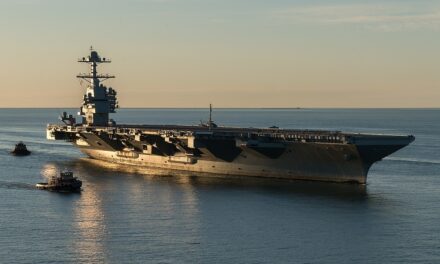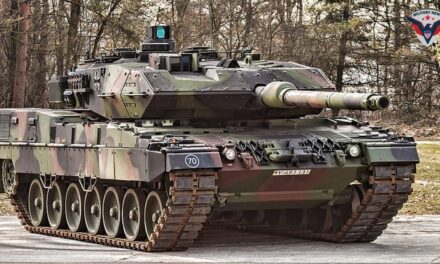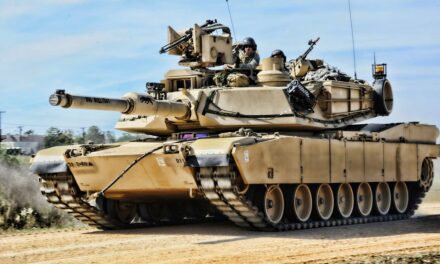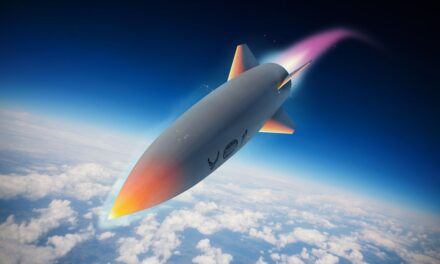We support our Publishers and Content Creators. You can view this story on their website by CLICKING HERE.
Key Points: The F-15SE Silent Eagle was Boeing’s attempt to retrofit stealth features onto the venerable F-15 platform. Introduced in 2009, it featured design modifications like canted vertical stabilizers, conformal weapons bays, and radar-absorbing materials, improving its radar cross-section compared to earlier F-15s.
-Despite these updates, the Silent Eagle’s stealth was far below fifth-generation aircraft like the F-35.
-While it retained the F-15’s agility, speed, and payload capacity, it struggled to find buyers, losing out to more advanced and stealthier alternatives like the F-35. By 2015, Boeing had abandoned the F-15SE to focus on the F-15EX.
The F-15SE Silent Eagle Did Not Have Enough Stealth To Fly
Although the F-15 Eagle fighter has been one of the most successful fighters in history, one complaint about the Eagle and its advanced younger brother, the F-15EX, is the lack of stealthiness.
Enter the proposed F-15SE, which stood for “Silent Eagle.” You guessed it, this was going to be a fourth-generation Strike Eagle with stealth attributes.
The F-15SE, unveiled in 2009, had conformal weapons bays that allowed it to be filled with a wide assortment of munitions including Sidewinders, AMRAAMs, HARMs, JDAMs, and Small Diameter Bombs.
F-15SE Silent Eagle: Design Changes Increased Stealth Characteristics
The F-15SE also had a design departure. Instead of twin vertical stabilizers, the Silent Eagle’s stabilizers were canted outward at 15 degrees. This, along with the use of radar-absorbing materials, helped reduce the possibility of radar detection and enabled better lift.
Performance Was Improved
The F-15SE’s demonstrator jet, the F-15E1, first flew in 2010. The F-15E1 had a fly-by-wire system and a Raytheon APG-82 AESA radar. This enabled better weapons tracking with new targeting pods for air-to-air and air-to-ground engagements. The lighter airframe gave the fighter better maneuverability and fuel efficiency. The F-15SE also boasted 58,000 of thrust.
An F-15E Strike Eagle assigned to the 494th Fighter Squadron takes off for a training sortie at Royal Air Force Lakenheath, England, Oct. 26, 2018. The 494th trains regularly to ensure RAF Lakenheath brings unique air combat capabilities to the fight. (U.S. Air Force photo/ Tech. Sgt. Matthew Plew)
Without Built-in Stealth Characteristics, It Wasn’t Going to Be Easy
But most importantly, just how stealthy was the F-15SE?
That’s open to interpretation, but some estimates noted that the stealth attributes would have certainly been better than those of the non-stealthy F-15 family members, but not with the radar evasion of a fifth-generation jet.
Dario Leone of the Aviation Geek Club claimed that “the end result was an F-15 that — compared to the original machine could (and let’s stress the ‘could’ here) have an RCS one-fifth, or less than one-fifth of the original F-15 Eagle. This is of course dependent on the aspect of the airframe to the radar that is looking at it: impressive, but not in the same league of a 5th-generation fighter with stealth ‘built in’ to the aircraft’s blueprints.”
F-15SE: Not Stealthy Enough
The problem is that the base F-15 started as incredibly un-stealthy. Its 25-meter cross-section is many times larger than the F/A-18 Super Hornet. The F-15SE was never going to be completely stealth no matter the updated design characteristics and radar-absorbing materials. In fact, the Silent Eagle was probably only going to be able to delay detection instead of completely disappearing off the enemy’s radar scope.

F-15 Aircraft #2 on Tarmac at Sunset with Weapons in Saudi Arabia. Image Credit: Boeing.
However, the Silent Eagle would still maintain the best features of the F-15 family. The SE serves as an air superiority, multi-role, air-to-ground fighter.
Comparable to the Strike Eagle
In terms of performance, the Silent Eagle is slightly slower than the Strike Eagle – MACH 2.15 to MACH 2.5. But that’s not a bad trade-off to sacrifice a little speed for more stealth characteristics.
Like the Strike Eagle, the Silent Eagle features the Joint Helmet Mounted Cueing System to help the pilot increase situational awareness and incorporates the Large Area Display component.
The Silent Eagle had many attributes, but the story did not end well for the semi-stealth warbird. It was entered into a competition for the Republic of Korea’s Air Force in 2013. The Eurofighter Typhoon and Lockheed Martin’s F-35 were also competing. South Korea ended up going with the much stealthier F-35, despite the more advanced airplane costing more than the F-15SE.
No Takers on the Foreign Market
That was to become a trend. The Silent Eagle was shopped around to Canada, Japan, and Saudi Arabia, but they all opted for the F-35 as well. Israel may have been the closest to choosing the F-15SE because of the threat of Iran someday developing nuclear weapons, but the Israelis backed out from purchasing the Silent Eagle.
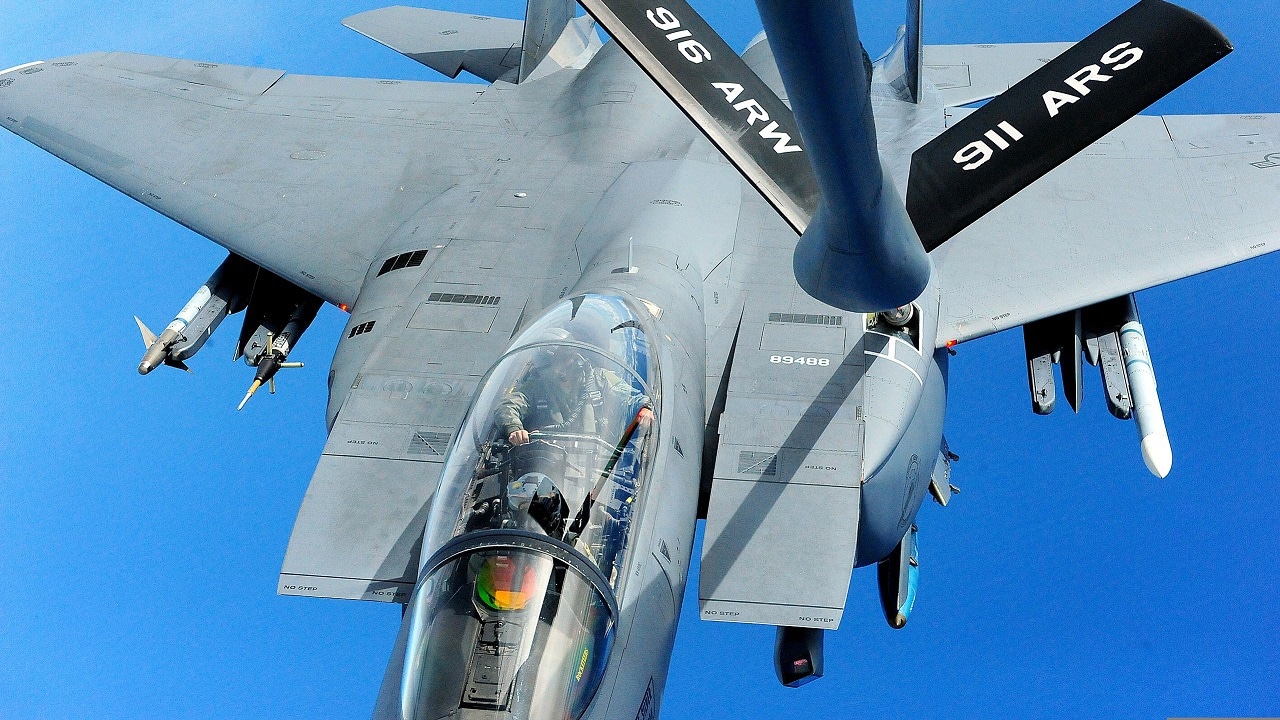
F-15E fighter. Image Credit: Creative Commons.
It was probably not wise for Boeing to try to compete with Lockheed Martin for a stealth fighter. The original F-15 family members started out with too much radar cross-section, and no design changes or stealth coatings were going to change that stubborn fact.
By 2015, Boeing had given up on the F-15SE to focus on the F-15EX. Thus, the Silent Eagle wasn’t all that silent and only achieved the status of a footnote to history.
About the Author: Dr. Brent M. Eastwood
Brent M. Eastwood, PhD, is the author of Don’t Turn Your Back On the World: a Conservative Foreign Policy and Humans, Machines, and Data: Future Trends in Warfare, plus two other books. Brent was the founder and CEO of a tech firm that predicted world events using artificial intelligence. He served as a legislative fellow for U.S. Senator Tim Scott and advised the senator on defense and foreign policy issues. He has taught at American University, George Washington University, and George Mason University. Brent is a former U.S. Army Infantry officer. He can be followed on X @BMEastwood.

 Conservative
Conservative  Search
Search Trending
Trending Current News
Current News 